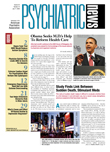Rising health care costs and slow growth in personal income related to the current recession will add at least another 6.9 million nonelderly Americans to the rolls of the uninsured by 2010, according to a study published May 28 on the Web site of the journal Health Affairs.
In the study report, researchers Todd Gilmer, Ph.D., and Richard Kronick, Ph.D., of the University of California, San Diego, predicted that 19.2 percent of all nonelderly Americans will be uninsured by 2010, an increase of 2 percentage points from 2007.
The researchers used a complex method that involves several data sources to calculate an “affordability index,” defined as the ratio of per-capita health spending for insured adults to the median income among workers. Those data sources included the National Health Accounts developed by the Office of the Actuary at the Centers for Medicare and Medicaid Services, the 1977 National Medical Care Expenditure Survey, the 1987 National Medical Expenditure Survey, and the 1996 and 1999 Medical Expenditure Panel Surveys. Their analysis also takes into account employment characteristics such as firm size, industry, and self-employment and part-time status, as well as demographic and socioeconomic characteristics such as age, sex, marital status, race and ethnicity, education, and home ownership. After using their index to derive predictions for uninsurance rates among workers, Gilmer and Kronick used the historical relationship between coverage rates for workers and for all nonelderly adults to generate predicted uninsurance rates for all nonelderly adults.
They estimate that the number of uninsured Americans will reach 52 million in 2010. Among workers not covered by a dependent's plan or by a public program, the fraction that is uninsured is expected to increase sharply, reaching 26.4 percent in 2010.
Moreover, Gilmer and Kronick acknowledged that their model cannot completely account for uninsurance that will arise from job losses during the current recession.
“Our model focuses on forecasting the rate of uninsurance among workers,” they write. “It does not directly take unemployment into account. During recessions we would expect the number of uninsured people to increase by more than projected by the model, because some of the newly unemployed will lose coverage when they lose their jobs.”
They cited researchers at Kaiser Family Foundation who have estimated that each 1 percent increase in unemployment leads to a 0.59 percent increase in the percentage uninsured among nonelderly adults. If unemployment were to increase to 10 percent, the number of uninsured people would increase by close to 6 million in the absence of policy change.
“Some of this projected increase would be in addition to our projected increase of 6.9 million, which will occur primarily as a result of the increasing unaffordability of health care for adults who continue working,” Gilmer and Kronick wrote.
They noted that the American Recovery and Reinvestment Act of 2009 may somewhat attenuate the effects of increasing unemployment on the number of uninsured people and that extension and expansion of the State Children's Health Insurance Program is expected to reduce the number of uninsured children.
“Given major uncertainties about the depth and length of the recession, about federal and state policy responses, and about the effect of any public policy response, it would be foolish to attempt to offer precise forecasts of the number of uninsured Americans,” the researchers observed. “These caveats notwithstanding, our work demonstrates that if personal income grows as slowly as projected... and health care costs grow at the rate projected by CMS, then the number of uninsured people is likely to grow by at least 6.9 million during 2008-10.”
Gilmer is an associate professor in the Department of Family and Preventive Medicine at the University of California at San Diego, and Kronick is a professor in that department.
